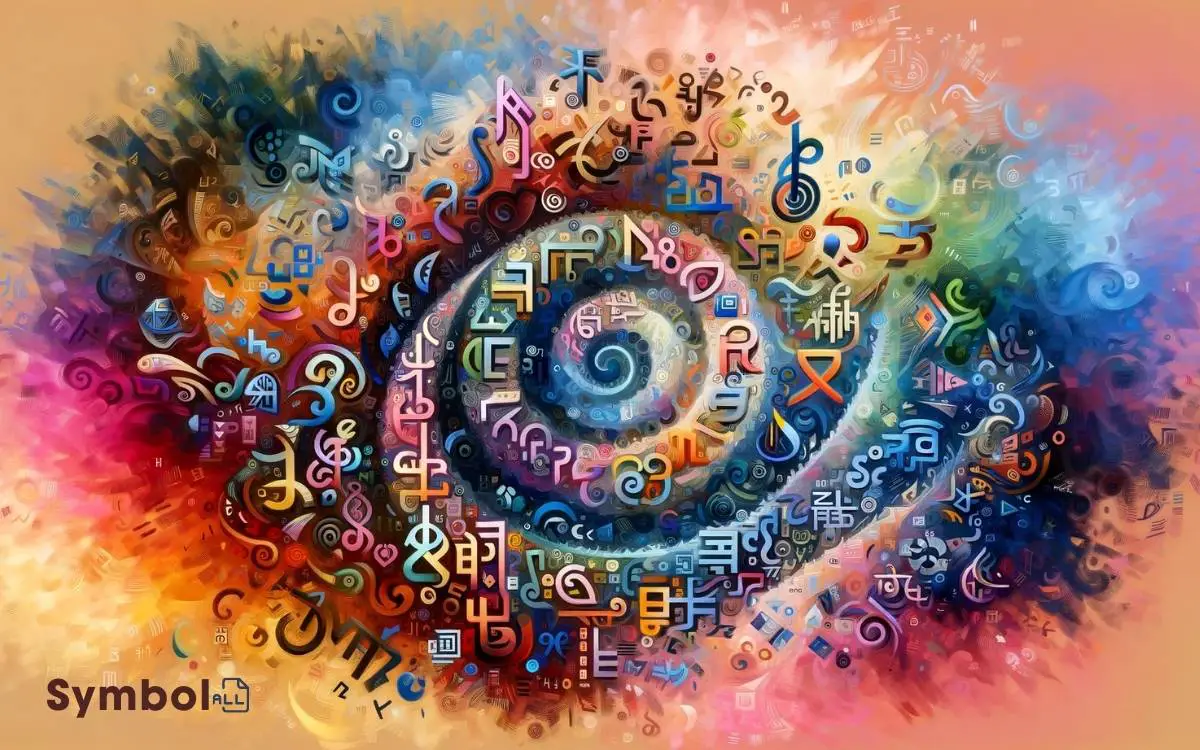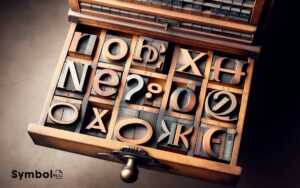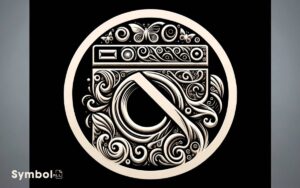Languages That Use Symbols Instead of Letters: Logographic!
Languages using symbols instead of letters offer a unique window into the human mind and culture. For instance, ancient Egyptian hieroglyphs blend logographic, syllabic, and alphabetic elements, requiring context for full understanding.
The complexity of Chinese characters, built from strokes and radicals, mirrors its linguistic depth and history.
The Mayan glyph system‘s combination of logograms and phonetic symbols uncovers the civilization’s achievements, while cuneiform marks the evolution of thought in Ancient Mesopotamia.
Each of these languages underscores the intricate ways humans have devised to encapsulate and convey profound meanings. Exploring these symbol-based languages further opens up areas of ancient wisdom and communication strategies.

Key Takeaways
The Essence of Symbolic Languages
Delving into the essence of symbolic languages, it’s important to understand that they serve as intricate systems of communication, employing symbols to convey specific, often complex, meanings and concepts.
Unlike alphabetic languages, where letters form words through a linear combination, symbolic languages utilize symbols that may represent ideas, objects, or relationships directly.
This direct representation allows for a rich, nuanced expression of thought and emotion, often transcending the boundaries of spoken language.
You’ll find these languages rely heavily on context and the cultural backdrop against which they’re interpreted, making them both powerful and challenging to master.
Their structure and use demand a deep understanding of the underlying cultural and philosophical principles, ensuring that every symbol carries weight and significance far beyond its surface appearance.
Ancient Egyptian Hieroglyphs
Among the most intricate symbolic languages, Ancient Egyptian hieroglyphs stand as a proof to the complexity and depth of human communication. You’ll find that these symbols, used from around 3200 BCE, aren’t mere pictures.
They represent sounds, objects, and concepts, making them a versatile tool for recording both mundane events and profound religious texts.
The system combines logographic, syllabic, and alphabetic elements, which means some symbols stand for a whole word, some for a syllable, and others for individual sounds.
This multidimensional approach allowed for a rich expression of ideas. However, deciphering them requires understanding their context, as the same symbol can have multiple meanings.
Their usage, deeply intertwined with Egypt’s culture and religion, offers you a window into the ancient Egyptians’ worldview, showcasing their beliefs, values, and daily life.
Chinese Characters: An Overview
You’ll find that the structure and complexity of Chinese characters set them apart in the world of symbolic languages.
Their historical evolution reflects a rich tapestry of cultural shifts and technological advancements.
Understanding these aspects provides key insights into their enduring significance and complexity.
Structure Complexity
The intricacy of Chinese characters originates from their unique structure, which combines strokes and radicals in a precise manner. Each character is more than a mere symbol; it’s a composition of various elements that convey meaning and sound.
You’ll discover that characters are constructed using a set number of strokes, arranged in specific sequences. Radicals, which are essential components, contribute to the semantic aspect of the character. They often suggest the meaning, guiding you towards comprehension.
Furthermore, the way strokes and radicals are blended can impact the pronunciation. This system, elaborate and layered, requires a profound understanding.
It’s not simply about memorizing symbols but grasping their construction, which mirrors both historical context and linguistic function.
Immerse yourself in this complexity, and you’ll reveal the rich tapestry of meaning that each character holds.
Historical Evolution
Delving into the historical evolution of Chinese characters reveals a dynamic journey shaped by cultural shifts and technological advancements.
You’ll find that the development of these symbols is not just a matter of linguistic interest but also a reflection of the society and technology of their times. You’ll find that the development of these symbols is not just a matter of linguistic interest but also a reflection of the society and technology of their times. Symbols and their cultural connection often reveal the values, priorities, and beliefs of the people who created and used them. From ancient hieroglyphs to digital emojis, these visual representations evolve alongside human innovation, serving as a bridge between communication and cultural identity.
| Era | Characteristic |
|---|---|
| Oracle Bone Script | Earliest form, used for divination |
| Bronze Inscriptions | Marks shift to metal use |
| Seal Script | Standardized for official documents |
| Clerical Script | Basis for modern forms |
This evolution underscores a move from practical, ritualistic use towards a more standardized and widespread application.
Each phase in this progression not just altered how characters looked but also how they were produced, reflecting advancements in materials and tools. This journey showcases the adaptability and resilience of Chinese characters through changing times.
The Mayan Glyph System
Exploring the Mayan glyph system uncovers a sophisticated form of writing that ancient Mesoamerican civilizations used for various purposes, including historical documentation and ritual texts.
This system is a complex combination of logograms symbols representing words or syllables and phonetic symbols.
You’ll find it fascinating how these glyphs were intricately carved on stone monuments, pottery, and codices, revealing the Mayans’ advanced understanding of language and communication.
Each glyph has a distinct shape, making the script visually striking.
The decipherment of these symbols has allowed modern scholars to piece together significant aspects of Mayan history, society, and cosmology.
Understanding this system sheds light on the intellectual achievements of the Mayans, highlighting their contributions to writing’s evolution.
Cuneiform: Mesopotamian Communication
Cuneiform, an ancient Mesopotamian writing system, stands as a proof to human innovation in early communication. You’ll find it fascinating that this script, composed of wedge-shaped marks on clay tablets, evolved over time.
Initially, cuneiform symbols represented objects or commodities. However, as societies in Mesopotamia developed, the script transformed to explore abstract ideas, complex transactions, and even literature.
This progression signifies not just a leap in writing technology but also in cognitive and societal complexities.
The ability to record laws, economic transactions, and myths enabled a new level of civilization sophistication. As you investigate cuneiform’s nuances, you appreciate its role as a cornerstone in the journey from prehistoric communication to the rich tapestry of written languages today.
Japanese Kanji: Borrowing From China
Just as cuneiform marked a noteworthy advancement in Mesopotamia, Japanese Kanji represents a pivotal development in writing, originating from China’s complex character system.
When you explore Kanji, you’re investigating a borrowing process that profoundly shaped Japanese written communication.
This adaptation wasn’t simply a copy-paste endeavor; it involved integrating Chinese characters into the Japanese linguistic framework, necessitating modifications to fit the distinct phonetic and grammatical structures of Japanese.
This fusion created a rich, layered writing system, where each Kanji character carries not only its original Chinese meaning but also a uniquely Japanese interpretation. The precision of Kanji, with its ability to convey nuanced expressions and concepts succinctly, highlights the sophistication of this borrowing process.
Understanding Kanji is to appreciate a historic linguistic evolution, showcasing the dynamic interchange between cultures.
Korean Hanja: A Historical Perspective
Korean Hanja, like Japanese Kanji, originated from Chinese characters, deeply impacting Korea’s literary and cultural landscape. This script served as the foundation for written Korean until the 15th century, when Hangul was introduced.
Despite this, Hanja retained its significance, symbolizing scholarly knowledge and social status. You’ll find that Hanja isn’t just a set of symbols but a bridge to Korea’s historical roots, containing multilayered meanings that enrich the language’s expressiveness.
Understanding Hanja offers insight into the nuanced interplay between Korea’s indigenous culture and Chinese influences. It’s fascinating how these characters encapsulate centuries of intellectual exchange and adaptation.
Today, while Hangul predominates, Hanja’s legacy persists, underscoring the complexity and depth of Korean heritage. This historical perspective reveals the dynamic evolution of written Korean, highlighting the enduring impact of Hanja.
The Enigmatic Symbols of Indus Script
Many scholars believe that the mysterious Indus script, comprising over 400 unique symbols, holds the key to understanding one of the ancient world’s most sophisticated civilizations.
You’re entering a domain where each symbol potentially reveals the lifestyle, beliefs, and complexities of the Indus Valley Civilization.
This script, yet to be deciphered, intrigues researchers because it represents the thoughts and voices of a people from over 4,000 years ago. The symbols, found on seals, pottery, and tools, suggest a form of communication that was highly advanced and nuanced.
Analyzing these symbols, you explore the possibility that they served multiple functions perhaps as a form of proto-writing or for administrative purposes.
The challenge lies in interpreting these symbols without a Rosetta Stone, making the Indus script a fascinating puzzle for the modern mind.
Sumerian Pictographs: Early Beginnings
You’ll find that Sumerian pictographs mark not just the origin of these symbols, but a groundbreaking step in human communication.
Their evolution into cuneiform script underscores a critical shift from simple drawings to a complex system of writing.
This transformation holds a pivotal place in the history of written language, highlighting the ingenuity of ancient civilizations.
Origin of Pictographs
Delving into the origins of pictographs, it’s important to recognize that the Sumerians pioneered this form of writing in ancient Mesopotamia, laying the groundwork for complex written communication.
You’ll find that these early pictographs weren’t mere drawings but a sophisticated system designed to record transactions, events, and inventory lists.
This initial step towards written language allowed for a more organized society, enabling the Sumerians to manage their burgeoning city-states more effectively.
The use of pictographs provided a visual means to convey information, transcending the barriers of oral communication. Each symbol held specific meanings, often related to agriculture, trade, or governance.
This foundation of symbolic representation paved the way for the development of more advanced writing systems, marking a significant leap in human communication and record-keeping.
Evolution Into Cuneiform
As civilizations evolved, so did the Sumerian pictographs, gradually transforming into the cuneiform writing system that would revolutionize ancient documentation and communication.
Initially, these pictographs served as simple representations of objects and ideas, carved onto clay tablets with a reed stylus.
Over time, the need for more efficient record-keeping and communication drove the Sumerians to refine their writing. This evolution saw the pictographs becoming increasingly abstract and stylized, making them quicker to inscribe and more versatile for conveying complex concepts.
The shift to cuneiform didn’t happen overnight. It was a gradual process, reflecting the dynamic nature of human society and its constant quest for improvement.
As the symbols became more streamlined, they laid the groundwork for a writing system that could capture the nuances of administrative, economic, and literary expression in the ancient world.
Significance in Writing History
Exploring the early beginnings of Sumerian pictographs reveals their pivotal role in the annals of writing history. These symbols, which originated around 3200 BCE, mark the shift from prehistoric communication to a structured system of writing.
By representing objects or concepts directly, they laid the foundational stone for the evolution into cuneiform, one of the earliest forms of writing.
To engage you further, let’s look at a table that outlines key aspects of Sumerian pictographs:
| Aspect | Description |
|---|---|
| Origin | Approx. 3200 BCE in Sumer |
| Representation | Objects and concepts |
| Purpose | Record keeping and communication |
| Evolution | Shifted into cuneiform script |
| Significance | Foundation for subsequent writing systems |
Understanding these early symbols offers insight into human civilization’s drive to record, communicate, and innovate.
The Unique Tally of Quipu Knots
The Quipu system, utilized by the ancient Inca civilization, employs a series of knotted strings as a unique method for recording numerical and possibly narrative information.
This system’s intricacy lies in its use of various knot types and string colors to represent different data points, making it more than a simple tally mechanism.
Each knot’s position on its string, the knot’s type, and the string’s color coded specific information, such as quantities, categories, or even calendar dates. The precision of the quipu allowed for detailed record-keeping, essential for managing the vast Inca Empire.
Its complexity illustrates a sophisticated understanding of data representation, showcasing the Incas’ ability to create a non-written, yet highly effective, communication system.
This method bridged gaps in administrative and historical documentation, offering insights into their civilization without a traditional written language.
Modern Usage and Digital Adaptation
In today’s digital era, innovators have adapted the ancient quipu system for contemporary uses, integrating its principles into modern technology. This adaptation showcases how historical symbolic languages can find relevance in modern contexts.
The quipu’s intricate knotting system, once used for recording data and messages, now inspires data encryption methods and novel algorithms in computing.
You’ll find its influence in areas requiring non-linear data representation, enhancing security protocols, and offering alternative data storage solutions.
This shift from tactile, physical knots to digital codes exemplifies a seamless blend of ancient wisdom with cutting-edge technology.
It’s a proof to the enduring utility of symbolic languages, proving that even the oldest communication methods can evolve to meet the demands of the digital age.
Conclusion
In your journey through the domain of symbolic languages, you’ve traversed time and continents, from ancient hieroglyphs to modern digital adaptations.
It’s fascinating to note that over 1.2 billion people today use Chinese characters, a proof to the enduring power and adaptability of symbol-based communication.
This statistic highlights not just the vast number of users but also the deep-rooted cultural and historical significance these symbols hold.
Symbolic languages, then, aren’t relics of the past but vibrant, evolving modes of expression shaping our world.






